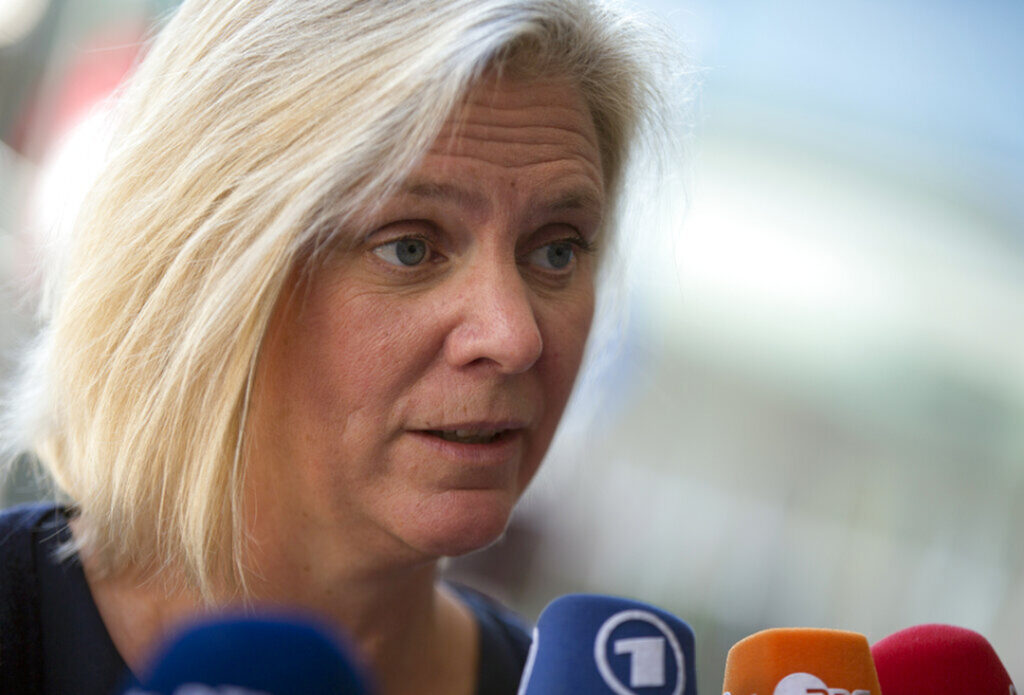THE ASSOCIATED PRESS
Sweden has decided to join neighboring Finland in seeking NATO membership, ending more than two centuries of military nonalignment in a historic shift prompted by Russia’s invasion of Ukraine.
Swedish Prime Minister Magdalena Andersson, pictured, warned that the Nordic country would be in a vulnerable position during the application period and urged her fellow citizens to brace themselves for the Russian response.
“Russia has said that that it will take countermeasures if we join NATO,” she said. “We cannot rule out that Sweden will be exposed to, for instance, disinformation and attempts to intimidate and divide us.”
Sweden’s move on May 16, 2022, came a day after the governing Social Democratic party endorsed a plan for the country to join the trans-Atlantic alliance and Finland’s government announced that it would seek to join NATO.
Moscow has repeatedly warned Finland, which shares a 1,340-kilometer border with Russia, and Sweden of repercussions should they pursue NATO membership. But Russian President Vladimir Putin seemed to downplay the significance of their move in a May 16 speech.
Speaking to a Russian-led military alliance of six ex-Soviet states, Putin said Moscow “does not have a problem” with Sweden or Finland applying for NATO membership, but that “the expansion of military infrastructure onto this territory will of course give rise to our reaction in response.”
Andersson, who leads the Social Democrats, said Sweden would hand in its NATO application jointly with Finland. Flanked by opposition leader Ulf Kristersson, Andersson said her government also was preparing a bill that would allow Sweden to receive military assistance from other nations in case of an attack.
“The Russian leadership thought they could bully Ukraine and deny them and other countries self-determination,” Kristersson said. “They thought they could scare Sweden and Finland and drive a wedge between us and our neighbors and allies. They were wrong.”
Once a regional military power, Sweden has avoided military alliances since the end of the Napoleonic Wars. Like Finland, it remained neutral throughout the Cold War, but formed closer relations with NATO after the 1991 Soviet collapse. Swedes no longer see themselves as neutral after joining the European Union in 1995, but have remained nonaligned militarily until now.
After being firmly against NATO membership for decades, public opinion in both countries shifted following Russia’s invasion of Ukraine, with record levels of support for joining the alliance. The Swedish and Finnish governments swiftly initiated discussions across political parties about NATO membership and reaching out to Germany, the United Kingdom, the United States and other NATO countries for their support.
Andersson’s party reversed its long-standing position that Sweden must remain nonaligned, giving NATO membership overwhelming support in Parliament. Only the small Left and Green parties objected when the issue was discussed by lawmakers.
Andersson said Sweden would make clear it doesn’t want nuclear weapons or permanent NATO bases on its soil — similar conditions as neighboring Norway and Denmark insisted on when the alliance was formed after World War II.
During a visit to Helsinki on May 16, Senate Republican leader Mitch McConnell said there is “very significant” support in Congress for welcoming Finland and Sweden to the alliance and that he expects ratification before the August recess.
In a joint statement, Nordic NATO members Denmark, Iceland and Norway said they were ready to assist Finland and Sweden “with all necessary means” during the application process.
However, all 30 current NATO members must agree to let the Nordic neighbors in the door.
Turkey voiced some objections last week, accusing the two countries of supporting Kurdish militants and others whom Turkey considers to be terrorists.
IMAGE CREDIT: THE ASSOCIATED PRESS

